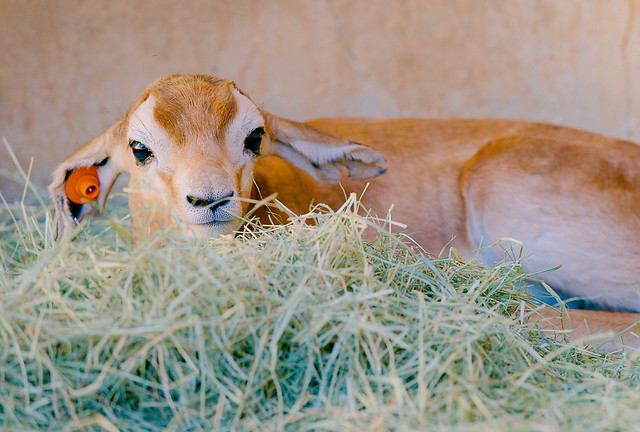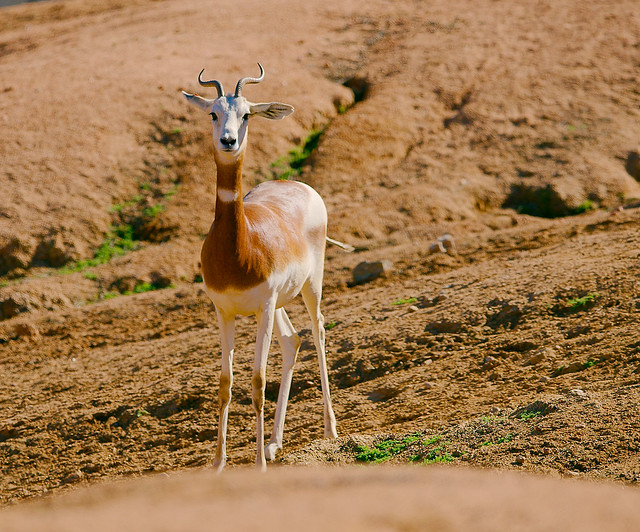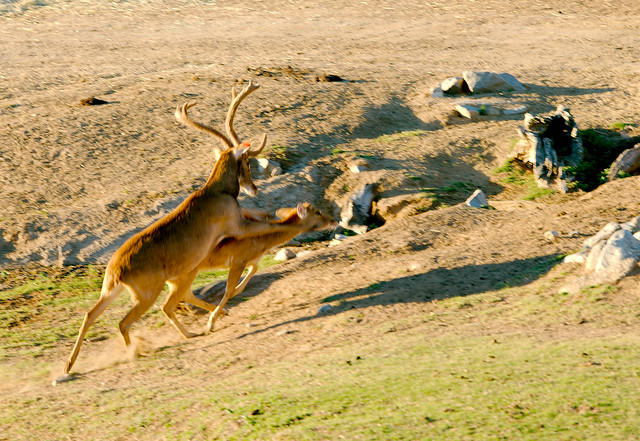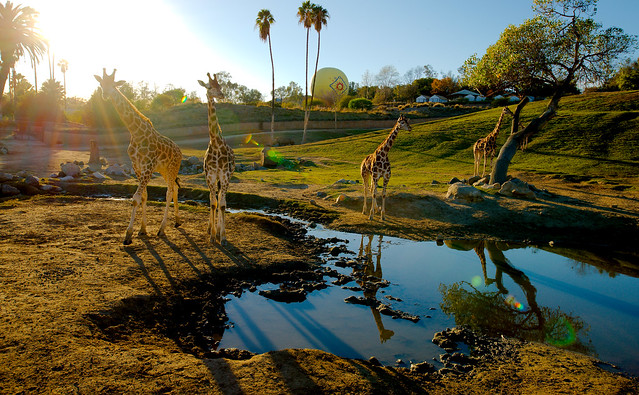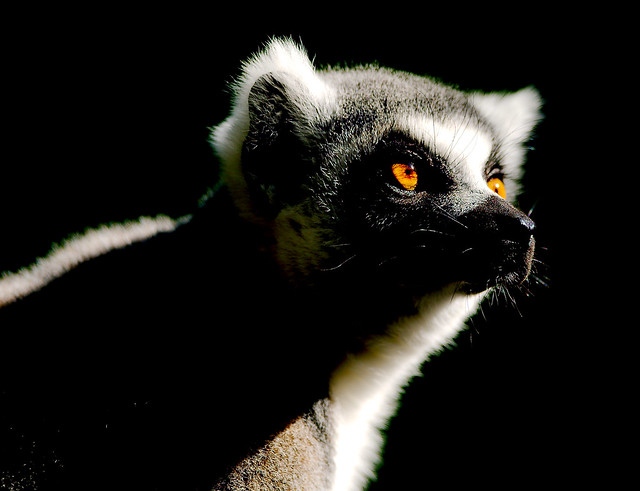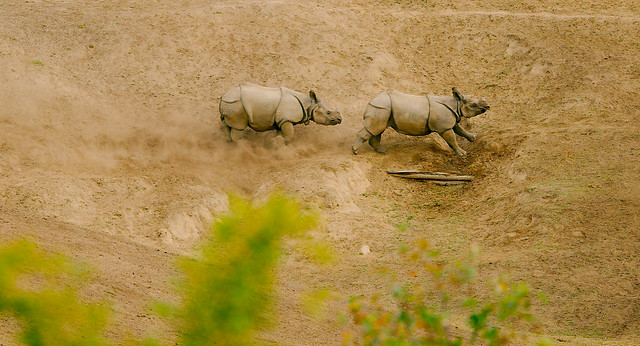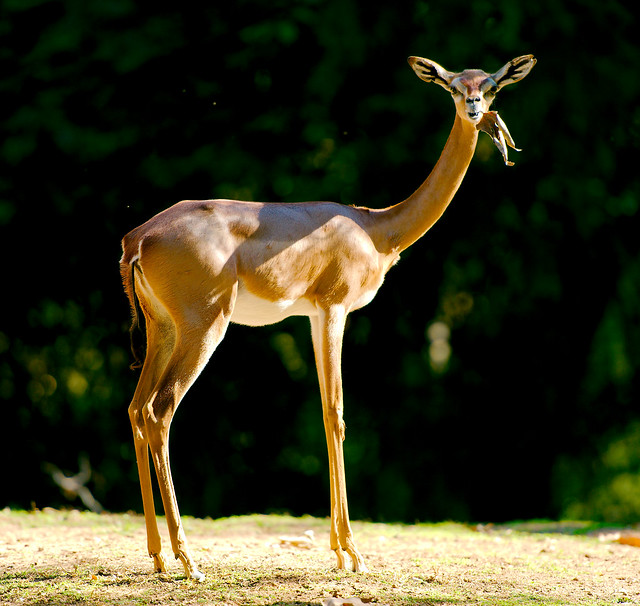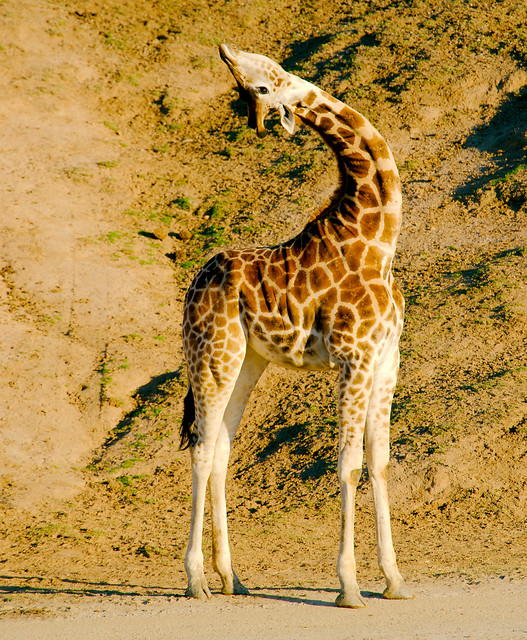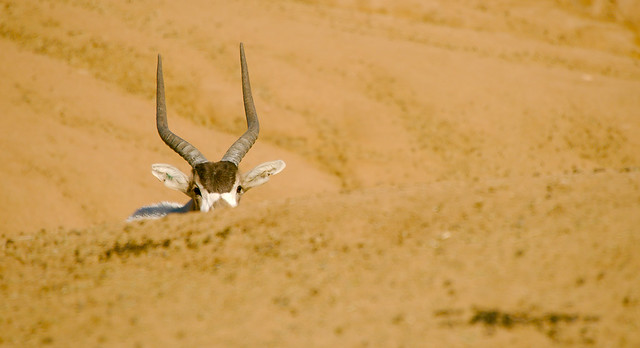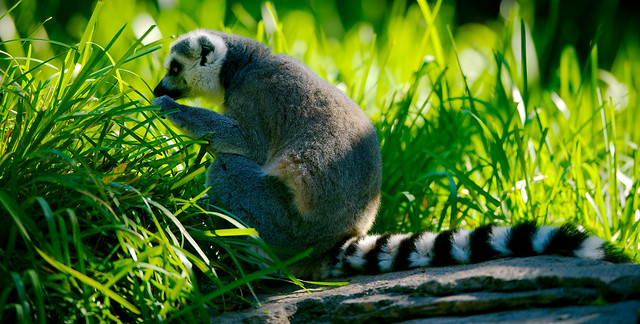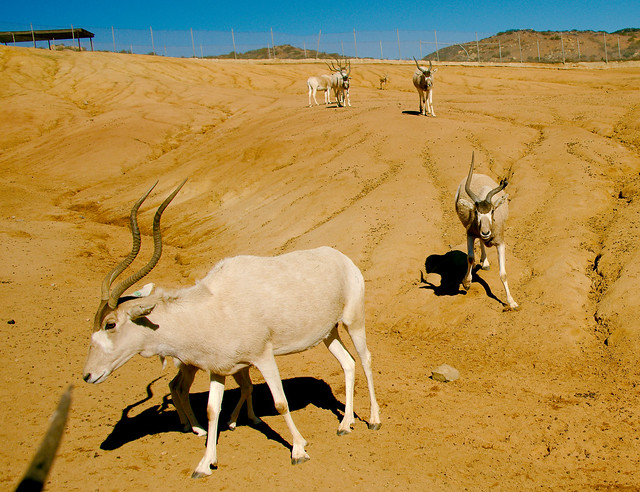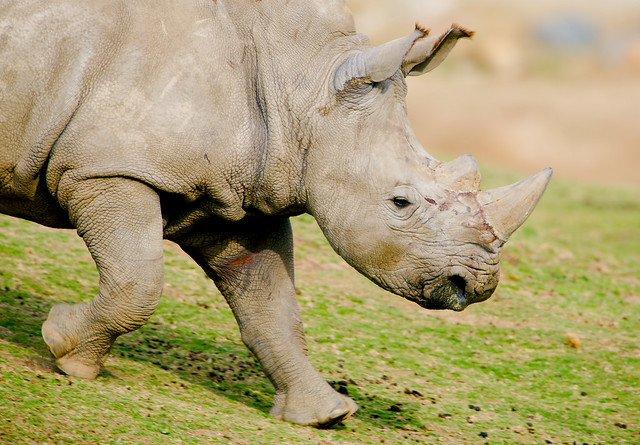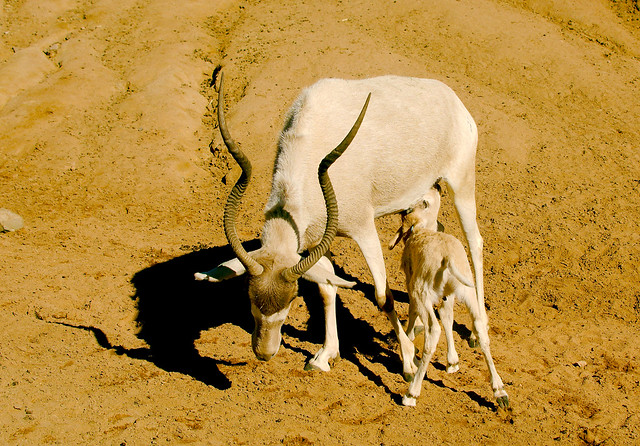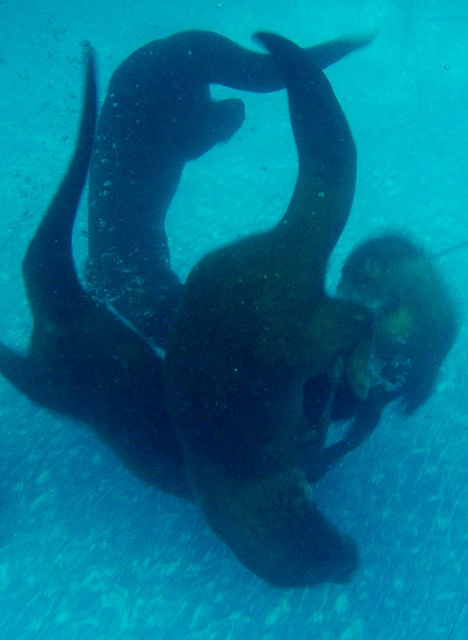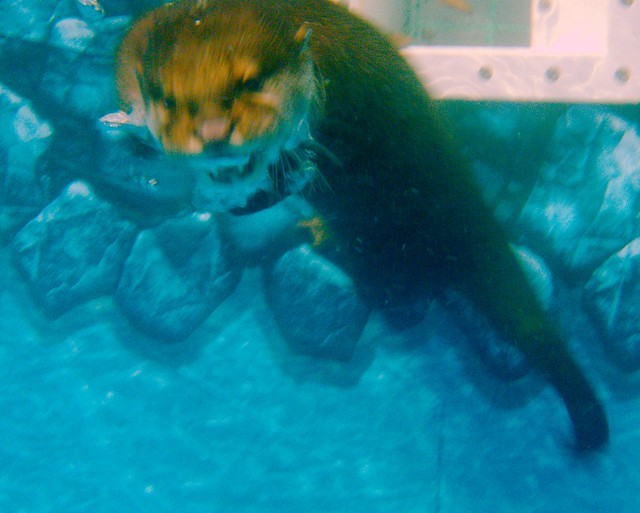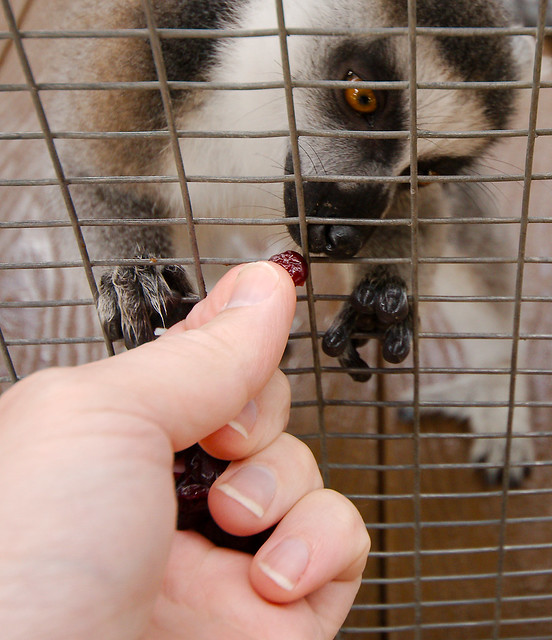And this is what success looks like.
Category Archives: Mammal
Addra Gazelle (Nanger dama)
The addra gazelle (aka dama gazelle or mhorr gazelle) is critically endangered. But those words are used a lot. What do they really mean?
The last assessment was in 2008. This is what they had to say:
“The sustained decline due to uncontrolled hunting and habitat loss has continued and is now estimated to have exceeded 80% over 10 years. Extensive field surveys have been made since 2001, but all subpopulations encountered are very small, with all at risk from unmanaged large-scale hunting, and the total population certainly numbers well less than 500 individuals. Decline is expected to continue based on ongoing hunting and unpredictable arrival of large hunting parties with high destructive potential from the Gulf states. The Dama Gazelle is following the same trail into extinction in the wild as the Scimitar-horned Oryx.”
In the early 1970’s, the species assessment presumed 10,000-12,000 … so that’s not only a drop of 80% in ten years … that’s a loss of over 95% over less than four decades.
So where is this happening (Facebookers, go here: http://maps.iucnredlist.org/map.html?id=8968 ) ?
So, at under 500 individuals in the wild, each of those orange blobs likely represents less than 100 individuals. If drought or hunting happens to hit in one of those areas, the population can drop by 25% alone. If the 80% loss rate continues, it could happen anyway.
This is why it is important that places like San Diego Safari Park do the breeding work they do. It’s not great that a species accustomed to roaming hundreds of miles be constrained to a handful of acres. But it’s much worse to let them die out completely.
Deer
Giraffe (Giraffa camelopardalis)
At the park, you get to drive out with a group (or on your own if you pay enough) and actually be out where the animals are. What’s interesting is that groups of animals stay together just like they were in a smaller enclosure. So, while the giraffes were free to roam wherever they like, they all seem to roam together.
Up in the back, you can see the big balloon ride and the lodges, neither of which I’ve used personally.
Ring-tailed Lemur (Lemur catta)
Indian Rhinoceros (Rhinoceros unicornis)
Gaur (Bos gaurus)
Gerenuk (Litocranius walleri)
Giraffe (Giraffa camelopardalis)
Addax (Addax nasomaculatus)
Ring-tailed Lemur (Lemur catta)
Addax (Addax nasomaculatus)
In the wild, animals that destroy their environments tend to be nomads. Hooved animals like these will move as a herd so the land can recover. Elephants move through the forests knocking over trees, but it takes long enough that more trees grow back.
Humans just run out of space and then start being meaner to one another.
Southern Square-lipped Rhinoceros (Ceratotherium simum simum)
Addax
In addition to their bird breeding, the San Diego Safari Park breeds mammals. Anecdotally, it appears as though we have an easier time breeding hooved mammals than other types of mammals. There are, for example, less than 500 wild addaxes (addaxen?) but over three times as many being bred in captivity.
This means that sights like this one may be on the rise.
